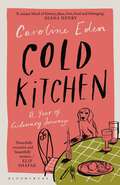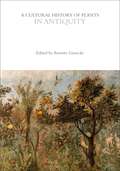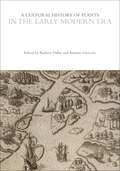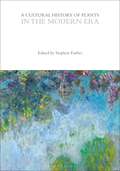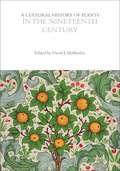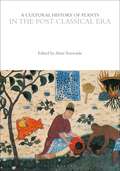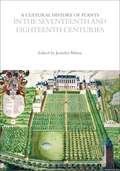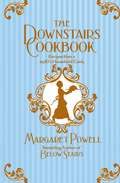- Table View
- List View
Carrot (UEB Contracted)
This image of a carrot fills the centre of the page. There is a locator dot shown, which will be at the top left of the page when the image is the correct way up. The carrot has a swollen taproot (main root), which is the part of the plant usually eaten, although the green leaves are edible and tasty. The root is sweet and crunchy. The carrots shoots and feathery leaves fill the top part of the page. They join the taproot in the centre of the page. The taproot of the carrot is usually coloured orange but some varieties are white or purple. It is fat at the top and tapers to a point at the bottom of the page. There are fine root hairs attached to the taproot through which the plant draws nutrition from the soil.
Carrot (UEB Uncontracted)
This image of a carrot fills the centre of the page. There is a locator dot shown, which will be at the top left of the page when the image is the correct way up. The carrot has a swollen taproot (main root), which is the part of the plant usually eaten, although the green leaves are edible and tasty. The root is sweet and crunchy. The carrots shoots and feathery leaves fill the top part of the page. They join the taproot in the centre of the page. The taproot of the carrot is usually coloured orange but some varieties are white or purple. It is fat at the top and tapers to a point at the bottom of the page. There are fine root hairs attached to the taproot through which the plant draws nutrition from the soil.
Cauliflower (Large Print)
This image of a cauliflower fills the centre of the page. There is a locator dot shown, which will be at the top left of the page when the image is the correct way up. This vegetable is in fact a highly modified flower. It is a member of the Brassicaceae family, which includes cabbage, sprouts, broccoli and kale. The head (or curd) of the cauliflower is at the top of the image; it has a lumpy texture and is a creamy white in colour. Down the page are the thick green leaves with their thick, lighter-coloured veins spreading out from the cauliflower's stalk at the bottom of the image.
Cauliflower (UEB Contracted)
This image of a cauliflower fills the centre of the page. There is a locator dot shown, which will be at the top left of the page when the image is the correct way up. This vegetable is in fact a highly modified flower. It is a member of the Brassicaceae family, which includes cabbage, sprouts, broccoli and kale. The head (or curd) of the cauliflower is at the top of the image; it has a lumpy texture and is a creamy white in colour. Down the page are the thick green leaves with their thick, lighter-coloured veins spreading out from the cauliflower's stalk at the bottom of the image.
Cauliflower (UEB Uncontracted)
This image of a cauliflower fills the centre of the page. There is a locator dot shown, which will be at the top left of the page when the image is the correct way up. This vegetable is in fact a highly modified flower. It is a member of the Brassicaceae family, which includes cabbage, sprouts, broccoli and kale. The head (or curd) of the cauliflower is at the top of the image; it has a lumpy texture and is a creamy white in colour. Down the page are the thick green leaves with their thick, lighter-coloured veins spreading out from the cauliflower's stalk at the bottom of the image.
Cherries (Large Print)
This page shows an image of two cherries joined by their stalks, and a leaf. They are slightly larger than life-size. There is a locator dot shown, which will be at the top left of the page when the image is the correct way up.Just to the right of centre you can find the leaf with its pattern of veins. To the left of this, the two stalks curve down to the fat, sweet red cherries nearer the bottom of the page.
Cherries (UEB Contracted)
This page shows an image of two cherries joined by their stalks, and a leaf. They are slightly larger than life-size. There is a locator dot shown, which will be at the top left of the page when the image is the correct way up.Just to the right of centre you can find the leaf with its pattern of veins. To the left of this, the two stalks curve down to the fat, sweet red cherries nearer the bottom of the page.
Cherries (UEB Uncontracted)
This page shows an image of two cherries joined by their stalks, and a leaf. They are slightly larger than life-size. There is a locator dot shown, which will be at the top left of the page when the image is the correct way up.Just to the right of centre you can find the leaf with its pattern of veins. To the left of this, the two stalks curve down to the fat, sweet red cherries nearer the bottom of the page.
Cold Kitchen: A Year of Culinary Journeys
by Caroline Eden'With its union of practicality and magic, a kitchen is a portal offering extended range and providing unlikely paths out of the ordinary. Offering opportunities to cook, imagine and create ways back into other times, other lives and other territories. Central Asia, Turkey, Ukraine, the South Caucasus, Russia, the Baltics and Poland. Places that have eased into my marrow over the years shaping my life, writing and thinking. They are here, these lands I return to, in this kitchen.'A welcoming refuge with its tempting pantry, shelves of books and inquisitive dog, Caroline Eden finds comfort away from the road in her basement Edinburgh kitchen. Join her as she cooks recipes from her travels, reflects on past adventures and contemplates the kitchen's unique ability to tell human stories. This is a hauntingly honest, and at times heartbreaking, memoir with the smell, taste and preparation of food at its heart. From late night baking as a route back to Ukraine to capturing the beauty of Uzbek porcelain, and from the troublesome nature of food and art in Poland to the magic of cloudberries, Cold Kitchen celebrates the importance of curiosity and of feeling at home in the world.
Cooking with Anna: Modern home cooking with Irish heart
by Anna HaughFor Anna Haugh cooking is in her bones and sharing in her nature. A born and bred Dubliner, Anna was raised on her mum's Irish home cooking. In this, her debut cookbook, she shares 85 recipes that are as straight-forward as they are delicious, such as Braised beef cheeks with sweet potato and basil crush, Dad's fish pie from Howth, vegan pulled pork and Guinness chocolate cake.Knowing full well the reality of juggling busy family life with work, Anna includes mouth-watering recipes that are easy to prepare for weeknight dinner without using every pot and pan in the house, such as Mammy's shepherd's pie with forked spuds, baby gem and chicken taco night, lentil bolognaise, coconut cod curry and Anna's Tuesday night stir-fry. And for when you have some time and want to push the boat out, there's a celebration roast, or the duck breast and potato waffle with a mushroom and black garlic puree, or even Aunty Ann's show-stopping carrot cake.For all their heartiness, the recipes in this book taste incredible and look stunning all because Anna shares her tricks of the trade to level up flavour and bring casual elegance to simple home cooking.
Courgette (Large Print)
This is an image of a green courgette, sometimes known as zucchini, in the middle of the page. There is a locator dot shown, which will be at the top left of the page when the image is the correct way up. The courgette's stalk is in the top left of the page, the main body of the fruit extends down and right to the little bump on the end of the fruit where the flower was once attached. There are lines on the image that represent slight ridges that run the length of the courgette.
Courgette (UEB Contracted)
This is an image of a green courgette, sometimes known as zucchini, in the middle of the page. There is a locator dot shown, which will be at the top left of the page when the image is the correct way up. The courgette's stalk is in the top left of the page, the main body of the fruit extends down and right to the little bump on the end of the fruit where the flower was once attached. There are lines on the image that represent slight ridges that run the length of the courgette.
Courgette (UEB Uncontracted)
This is an image of a green courgette, sometimes known as zucchini, in the middle of the page. There is a locator dot shown, which will be at the top left of the page when the image is the correct way up. The courgette's stalk is in the top left of the page, the main body of the fruit extends down and right to the little bump on the end of the fruit where the flower was once attached. There are lines on the image that represent slight ridges that run the length of the courgette.
A Cultural History of Plants in Antiquity (The Cultural Histories Series)
A Cultural History of Plants in Antiquity covers the period from 10,000 BCE to 500 CE. This period witnessed the transition from hunter-gatherer subsistence to the practice of agriculture in Mesopotamia and elsewhere, and culminated in the fall of the Roman Empire, the end of the Han Dynasty in China, the rise of Byzantium, and the first flowering of Mayan civilization. Human uses for and understanding of plants drove cultural evolution and were inextricably bound to all aspects of cultural practice. The growth of botanical knowledge was fundamental to the development of agriculture, technology, medicine, and science, as well as to the birth of cities, the rise of religions and mythologies, and the creation of works of literature and art. The 6 volume set of the Cultural History of Plants presents the first comprehensive history of the uses and meanings of plants from prehistory to today. The themes covered in each volume are plants as staple foods; plants as luxury foods; trade and exploration; plant technology and science; plants and medicine; plants in culture; plants as natural ornaments; the representation of plants. Annette Giesecke is Professor of Classics at the University of Delaware, USA. Volume 1 in the Cultural History of Plants set.General Editors: Annette Giesecke, University of Delaware, USA, and David Mabberley, University of Oxford, UK.
A Cultural History of Plants in the Early Modern Era (The Cultural Histories Series)
A Cultural History of Plants in the Early Modern Era covers the period from 1400 to 1650, a time of discovery and rediscovery, of experiment and innovation. Renaissance learning brought ancient knowledge to modern European consciousness whilst exploration placed all the continents in contact with one another. The dissemination of knowledge was further speeded by the spread of printing. New staples and spices, new botanical medicines, and new garden plants all catalysed agriculture, trade, and science. The great medical botanists of the period attempted no less than what Marlowe's Dr Faustus demanded - a book “wherein I might see all plants, herbs, and trees that grow upon the earth.” Human impact on plants and our botanical knowledge had irrevocably changed. The 6 volume set of the Cultural History of Plants presents the first comprehensive history of the uses and meanings of plants from prehistory to today. The themes covered in each volume are plants as staple foods; plants as luxury foods; trade and exploration; plant technology and science; plants and medicine; plants in culture; plants as natural ornaments; the representation of plants. Andrew Dalby is an independent scholar and writer, based in France. Annette Giesecke is Professor of Classics at the University of Delaware, USA. Volume 3 in the Cultural History of Plants set.General Editors: Annette Giesecke, University of Delaware, USA, and David Mabberley, University of Oxford, UK.
A Cultural History of Plants in the Modern Era (The Cultural Histories Series)
A Cultural History of Plants in the Modern Era covers the period from 1920 to today - a time when population growth, industrialization, global trade, and consumerism have fundamentally reshaped our relationship with plants. Advances in agriculture, science, and technology have revolutionised the ways we feed ourselves, whilst urbanization and industrial processing have reduced our direct connection with living plants. At the same time, our understanding of both ecology and conservation have greatly increased and our appreciation of the meanings and aesthetics of plants continue to suffuse art and everyday culture. The modern era has witnessed a revolution in both the valuation and the destruction of the natural world - more than ever before, we understand that the vitality of our relationship with plants will shape our future. The 6 volume set of the Cultural History of Plants presents the first comprehensive history of the uses and meanings of plants from prehistory to today. The themes covered in each volume are plants as staple foods; plants as luxury foods; trade and exploration; plant technology and science; plants and medicine; plants in culture; plants as natural ornaments; the representation of plants.Stephen Forbes is an independent scholar and writer, based in Australia. Volume 6 in the Cultural History of Plants set.General Editors: Annette Giesecke, University of Delaware, USA, and David Mabberley, University of Oxford, UK.
A Cultural History of Plants in the Nineteenth Century (The Cultural Histories Series)
A Cultural History of Plants in the Nineteenth Century covers the period from 1800 to 1920, a time of astonishing growth in industrialization, urbanization, migration, population growth, colonial possessions, and developments in scientific knowledge. As European modes of civilization and cultivation were exported worldwide, botanical study was revolutionized – through the work of Charles Darwin and many others – and the new science of biology was born, based on cells, nuclei and molecules. As Darwinism took hold, plants came to be seen as a way of thinking about the connectivity of nature and life itself. The 6 volume set of the Cultural History of Plants presents the first comprehensive history of the uses and meanings of plants from prehistory to today. The themes covered in each volume are plants as staple foods; plants as luxury foods; trade and exploration; plant technology and science; plants and medicine; plants in culture; plants as natural ornaments; the representation of plants. David Mabberley is Emeritus Fellow at Wadham College, University of Oxford, UK; Emeritus Professor at the University of Leiden, The Netherlands; and Adjunct Professor at Macquarie University, Australia. Volume 5 in the Cultural History of Plants set.General Editors: Annette Giesecke, University of Delaware, USA, and David Mabberley, University of Oxford, UK.
A Cultural History of Plants in the Post-Classical Era (The Cultural Histories Series)
A Cultural History of Plants in the Post-Classical Era covers the period from 500 to 1400, ranging across northern and central Europe to the Mediterranean, and from the Byzantine and Arabic Empires to the Persian World, India, and China. This was an age of empires and fluctuating borders, presenting a changing mosaic of environments, populations, and cultural practices. Many of the ancient uses and meanings of plants were preserved, but these were overlaid with new developments in agriculture, landscapes, medicine, eating habits, and art.The six-volume set of the Cultural History of Plants presents the first comprehensive history of the uses and meanings of plants from prehistory to today. The themes covered in each volume are plants as staple foods; plants as luxury foods; trade and exploration; plant technology and science; plants and medicine; plants in culture; plants as natural ornaments; the representation of plants.Alain Touwaide is Scientific Director at the Institute for the Preservation of Medical Traditions, Washington, D.C., USA.A Cultural History of Plants in the Post-Classical Era is the second volume in the six-volume set, A Cultural History of Plants, also available online as part of Bloomsbury Cultural History, a fully-searchable digital library (see www.bloomsburyculturalhistory.com).General Editors: Annette Giesecke, University of Delaware, USA, and David Mabberley, University of Oxford, UK.
A Cultural History of Plants in the Seventeenth and Eighteenth Centuries (The Cultural Histories Series)
A Cultural History of Plants in the Seventeenth and Eighteenth Centuries covers the period from 1650 to 1800,a time of global exploration and the discovery of new species of plants and their potential uses. Trade routes were established which brought Europeans into direct contact with the plants and people of Asia, Oceania, Africa and the Americas. Foreign and exotic plants become objects of cultivation, collection, and display, whilst the applications of plants became central not only to naturalists, landowners, and gardeners but also to philosophers, artists, merchants, scientists, and rulers. As the Enlightenment took hold, the natural world became something to be grasped through reasoned understanding. The 6 volume set of the Cultural History of Plants presents the first comprehensive history of the uses and meanings of plants from prehistory to today. The themes covered in each volume are plants as staple foods; plants as luxury foods; trade and exploration; plant technology and science; plants and medicine; plants in culture; plants as natural ornaments; the representation of plants. Jennifer Milam is Pro Vice-Chancellor and Professor of Art History, University of Newcastle, Australia. Volume 4 in the Cultural History of Plants set.General Editors: Annette Giesecke, University of Delaware, USA, and David Mabberley, University of Oxford, UK.
Cupcake (Large Print)
This is a picture of a cupcake. It is in the middle of the page. There is a locator dot shown, which will be at the top left of the page when the image is the correct way up. At the top of the picture a glace cherry is sitting on some pink sugar icing. Below this is the cake overflowing the top of the paper cup below.
Cupcake (UEB Contracted)
This is a picture of a cupcake. It is in the middle of the page. There is a locator dot shown, which will be at the top left of the page when the image is the correct way up. At the top of the picture a glace cherry is sitting on some pink sugar icing. Below this is the cake overflowing the top of the paper cup below.
Cupcake (UEB Uncontracted)
This is a picture of a cupcake. It is in the middle of the page. There is a locator dot shown, which will be at the top left of the page when the image is the correct way up. At the top of the picture a glace cherry is sitting on some pink sugar icing. Below this is the cake overflowing the top of the paper cup below.
Diet, Life Expectancy, And Chronic Disease: Studies Of Seventh-day Adventists And Other Vegetarians
by Gary E. FraserThe Downstairs Cookbook: Recipes From A 1920s Household Cook
by Margaret PowellThe Downstairs Cookbook offers genuine 1920s recipes from bestselling author Margaret Powell, the house maid and cook who shared tales from her years of service in Below Stairs and inspired the original Upstairs Downstairs TV series. Now in this cookery book she offers a collection of sweet and savoury courses that the servants regularly prepared for their masters upstairs, accompanied throughout by her heartwarming anecdotes from life in service. The recipes include retro classics such as kedgeree, jugged hare and angels on horseback as well as more adventurous offerings such as lobster soufflé and veal quenelles. With separate chapters on pastry and preserves, this is Margaret Powell’s complete cook’s manual for a 1920s household.

